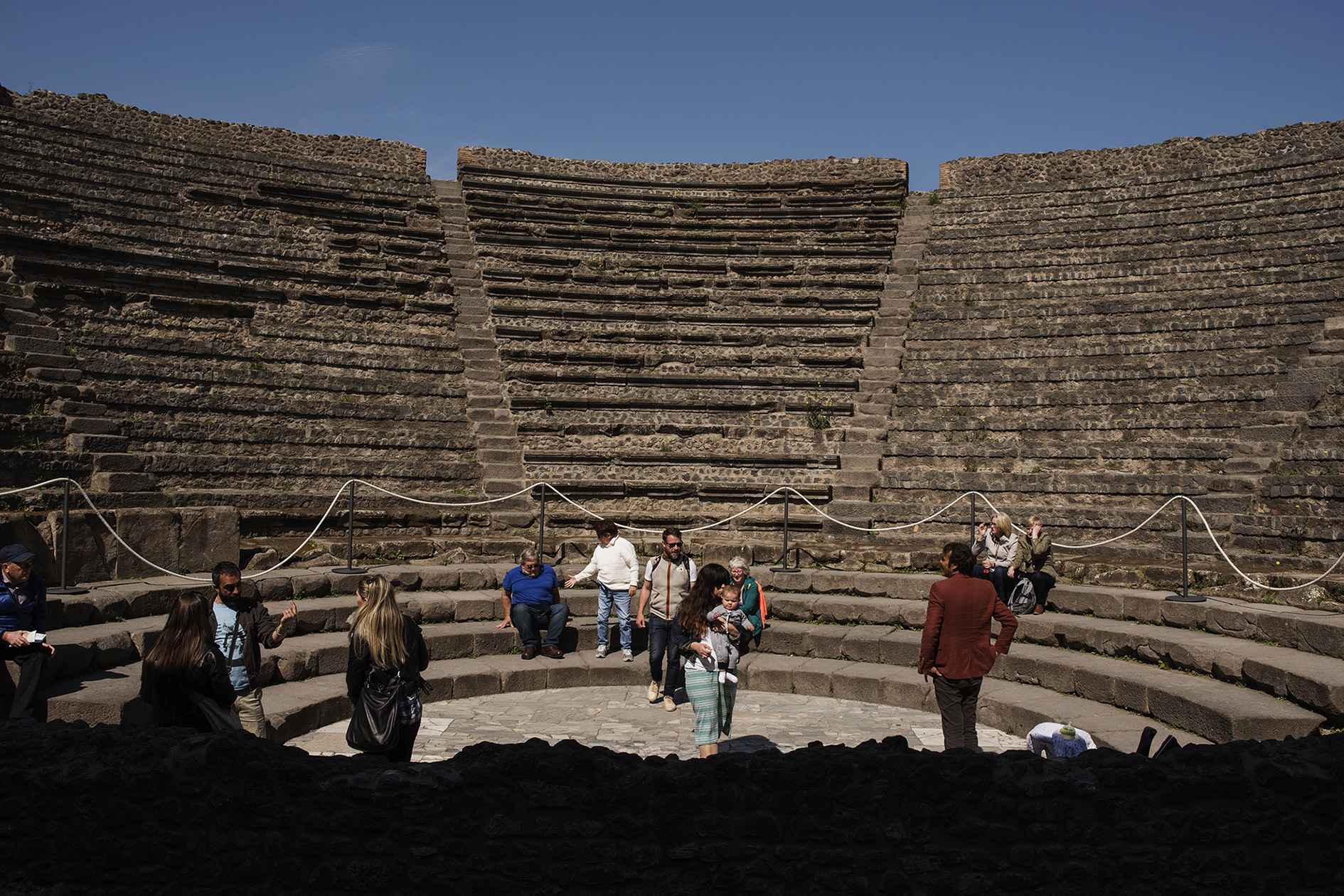In the mid-eighteenth century, the view on the slopes of Vesuvius must have been very different from that we are used to seeing today.

Back then, no one had ever thought there might be an entire city under the layer of earth, crystallised by the tragic eruption which had fixed it forever in time and space, immobilising it in a continuous present. Pompeii was a still a discovery waiting to be made.
The first archaeological surveys were carried out in 1748, during the reign of Charles of Bourbon. Scholars of the time, under one of history's many misconceptions, like that of Christopher Columbus thinking he was journeying to the Indies, imagined they were unearthing further fragments of ancient Stabiae. The epigraph Res Publica Pompeianorum was only discovered fifteen years later, in 1763. A sign that there must have been a city down below which was entirely distinct from all the others encircling Vesuvius.
Years passed, and Ferdinand IV of Bourbon now sat on the throne of Naples with his wife Maria Carolina, a refined sovereign of Austrian origin and a lover of art and the finer things in life. The Bourbon family immediately understood that Pompeii might turn out to be a real treasure — as well as an archaeological one — and very prestigious for those who encouraged its discovery. For the first time in history, some of the finds were unearthed and no longer buried.

This was the oldest area of the excavations, the one which still lies today between the Triangular Forum, the Temple of Isis and the Theatre district. It is from here that Pompeii returned to life again, breaking the spell in which the ash and lava fragments had enclosed it some 1,700 years previously.
The area of the Theatres, in addition to being the area of the first excavations, is also one of the city's oldest. The Grand Theatre, in particular, was already built in the time of the Samnites, well before Roman rule. Evidence for this also comes the appearance of the theatre itself. With its tiered seating for spectators, built into a hillside to take advantage of the slope, and its horseshoe shape, it is reminiscent of Hellenistic models and very different from the hemicycle which was later in vogue with the ancient Romans.
"Pompeii, miraculously preserved from its sudden death, passed all our imagination"Simone de Beauvoir
Facing the auditorium, and set within the splendid scenery from the Lattari Mountains down to the Sarno Valley, is the stage. Here Atellan farces were performed, one of the most ancient forms of entertainment on the entire Italian peninsula: comedies with jokes and farcical elements, often peppered with actor improvisation, which — in some ways — can be considered the forerunner of the famous commedia dell'arte.
The Triangular Forum, on the other hand, was a sort of "antechamber" for those waiting for the shows. People often met here to exchange a few words whilst waiting to enter the theatre or to attend horse races. Here, too, can also be found one of the oldest testimonies to ancient Pompeii. Unfortunately, it has almost completely disappeared: the 4th century BC Doric temple on which, in fact, the Forum was based, with its 95 columns constructed in the same style. That Pompeii was in direct contact with Hellenistic culture is also proved by the fact that the surviving capitals are similar to those found in the temples of Magna Graecia from the end of the 6th century after Christ.

Finally, we come to the Temple of Isis, one of the most authentic proofs of the cults which permeated Pompeian society at that time. The first fact which catches the eye is that of the divinity to whom the temple is dedicated: Isis, the Egyptian goddess of motherhood and fertility, whose cult was widespread, especially in the Nile Delta. Yet another demonstration how open and cosmopolitan the city of Pompeii was, from ancient Greece to Middle Eastern religions, so much so as to build temples in honour of non-native divinities.

The building's shape follows that of religious architecture of the second century before Christ: a porticoed courtyard containing the temple within it, set on a podium, whilst the area in front contains the altar and a pit for offerings. The cult of Isis was in fact highly thought of by Pompeii's population, in particular by the less wealthy classes, who saw the Goddess as the symbol of fertility and thus of salvation, hope and life after death. A popular, collective salvation cult which had little to do with the "official" religions closely linked to political power.
The oldest part of the excavations tells, therefore, of a city which was always changing, never set in its ways, and constantly open to cultural-religious exchange. In some ways, an "unpublished" Pompeii, one which goes far beyond the story of the Roman city, with its roots in far-off times.

